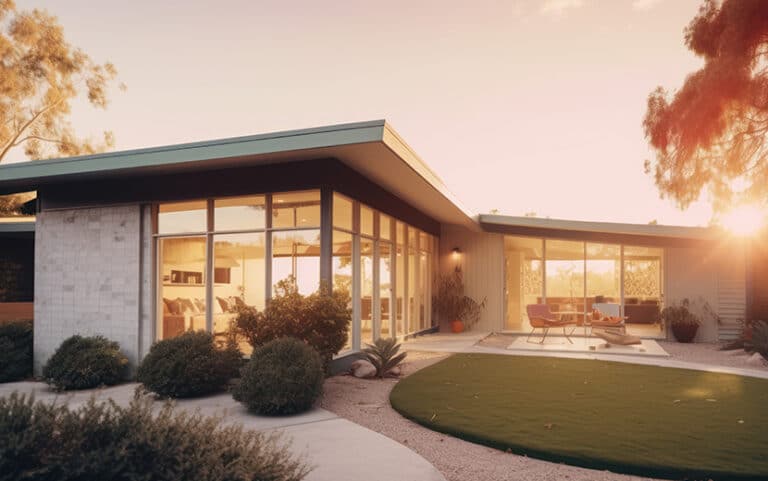Residential Flat Roofing: Types, Advantages, and Maintenance Tips
Sep 20, 2023
Residential Flat Roofing: Types, Advantages, and Maintenance Tips
Although less common in residential settings, flat roofs offer unique advantages and aesthetic appeal for many homeowners. As a leading roofing contractor in Burleson, TX, Honey Bees Roofing & Solar understands the nuances of residential flat roofing and is well-equipped to guide homeowners through the process of selecting and maintaining the most suitable flat roofing materials for their homes. If you are considering a flat roof for your home or looking to learn more about the subject, this comprehensive guide offers valuable insights to help you make informed decisions.
Designed to cover everything from the various types of flat roofing materials and their advantages to crucial maintenance practices, our guide aims to provide a thorough understanding of what residential flat roofing entails. While flat roofs typically lend themselves more to commercial and industrial buildings, they have been making their way into the residential sphere in recent years. As modern and contemporary architectural styles gain popularity, homeowners are increasingly exploring the unique attributes flat roofs offer, such as maximizing valuable living space and creating stylish rooftop gardens or decks.
As with any significant home improvement project, understanding the options, requirements, and maintenance needs associated with flat roofing is crucial to ensuring long-lasting performance. With the expertise and guidance of Honey Bees Roofing & Solar, this guide will help you navigate the world of residential flat roofing, allowing you to make educated decisions about the ideal material to embrace for your home, and how to ensure its longevity. Whether you are a homeowner contemplating a flat roof, an architect seeking inspiration, or a curious homeowner learning more about different roofing styles, this guide has you covered. Let’s dive in and explore the fascinating realm of residential flat roofing.
Popular Types of Residential Flat Roofing Materials
There is a wide variety of flat roofing materials available, each with its advantages and limitations. Here, we focus on four popular options for residential flat roofs:
- Built-Up Roofing (BUR): BUR is one of the oldest and most traditional flat roofing techniques, consisting of multiple layers of roofing felt and asphalt/bitumen, with a top layer of gravel or stone for added protection. It is known for its durability, longevity, and relatively low cost.
- Modified Bitumen Roofing: This material is an enhanced version of BUR, comprising layers of reinforced roofing felt and an asphalt/bitumen blend with added modifiers (such as atactic polypropylene or styrene-butadiene-styrene) to improve flexibility, durability, and weather resistance. It is typically applied in rolls and may be attached using a torch, adhesive, or self-adhesive backing.
- EPDM Rubber Roofing: Ethylene propylene diene monomer (EPDM) rubber is a synthetic material commonly used for its ease of installation, low maintenance requirements, and excellent weather resistance. EPDM flat roofs may be installed fully adhered, mechanically attached, or ballasted with stone or gravel.
- TPO and PVC Roofing: Thermoplastic olefin (TPO) and polyvinyl chloride (PVC) single-ply roofing membranes are lightweight, highly reflective, and energy-efficient. These materials are commonly chosen for their ease of installation, longevity, and resistance to UV rays, chemicals, and punctures.
Advantages of Flat Roofs for Residential Homes
Residential flat roofs offer several benefits that homeowners may find appealing, including:
- Extra Living Space: Flat roofs can be transformed into functional outdoor spaces, such as rooftop gardens, decks, or patios, providing homeowners with additional living space and entertainment areas.
- Unique Aesthetics: With their sleek and modern design, flat roofs complement contemporary architectural styles, offering a distinctive appearance that sets them apart from the more common pitched roofs.
- Ease of Maintenance: Flat roofs generally facilitate more straightforward maintenance and inspection, as contractors can walk on the roof without difficulty, making access to gutters, vents, and other rooftop fixtures more manageable.
- Solar Installation: Flat roofs provide ample space for solar panel installation and offer flexible positioning options to maximize sunlight exposure and energy production.
Essential Maintenance Tips for Residential Flat Roofs
Proper care and maintenance are crucial to prolonging the life of your flat roof and ensuring that it functions effectively. Here are four essential tips for maintaining a residential flat roof:
- Regular Inspections: Schedule routine inspections with a reputable roofing contractor like Honey Bees Roofing & Solar to identify and address any potential issues that could affect your roof’s performance.
- Debris Removal: Keep your flat roof clear of debris, such as leaves, branches, and dirt, to prevent water build-up, moss growth, and potential blockage of drainage systems.
- Drainage System Maintenance: Ensure that your roof’s drainage system—such as gutters, downspouts, and scuppers—is functioning correctly and clear of obstructions to prevent water pooling and related damages.
- Prompt Repairs: Address any damage or potential issues immediately to prevent further deterioration, leaks, and interior damage.
Factors to Consider When Choosing Flat Roofing Materials
When selecting the ideal material for your residential flat roof, consider the following factors:
- Climate: Each roofing material has unique properties that make it more or less suitable for specific climate conditions. For instance, EPDM rubber is highly resistant to temperature fluctuations, making it an excellent choice for regions with harsh winters or scorching summers.
- Weight: The weight of the roofing material relative to your home’s structure is crucial to consider, as heavier materials may require added reinforcement to support the load.
- Lifespan: Compare the expected lifespan of various materials to make an informed decision about the long-term value of your investment. While some options, like BUR, are known for their longevity, other materials, like TPO or PVC, are likely to have a shorter lifespan but offer other benefits, such as energy efficiency.
- Cost: Research the upfront and long-term costs associated with different roofing materials, including installation, maintenance, and eventual replacement expenses, to make an educated decision about the best investment for your home.
Conclusion
Residential flat roofs provide homeowners with various advantages, including unique aesthetics, added living spaces, and ease of maintenance. Knowing the differences between popular flat roofing materials and understanding the factors to consider when selecting your roof will help create a lasting foundation for your home. With appropriate care and maintenance, your flat roof can offer you and your family a stylish, functional living space for many years to come. Consult with an experienced roofing contractor, like Honey Bees Roofing & Solar, to ensure your flat roofing project meets your expectations and complements your home’s design and structure.
